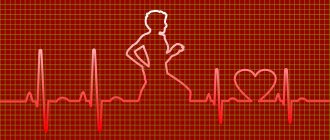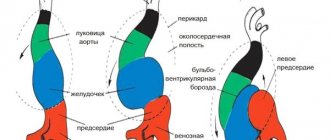Difficulty breathing, or shortness of breath, is a fairly common symptom that can occur in healthy people, for example, after exercise. However, if the problem appears at rest, in a lying position, it can be caused by a number of diseases, including serious ones. Why is it hard to breathe while lying down? There can be many reasons for this.
For example, shortness of breath can occur with a rare hereditary pathology - Pompe disease. Pompe disease belongs to the so-called storage diseases. In this disease, due to a gene mutation, there is a deficiency of the enzyme acid glucosidase, which breaks down glycogen. It accumulates and progressive muscle weakness develops.
Usually, weakness of the leg muscles first occurs, and gradually the arm muscles and muscles involved in the breathing process are affected, which leads to shortness of breath1,2. Pompe disease is rare and is classified as an orphan disease. Much more often, shortness of breath when lying down is caused by other pathologies. What diseases can cause it and what to do in such cases?
Mechanism of shortness of breath in the supine position
Shortness of breath while lying on your back, or orthopnea, occurs due to increased pressure in the blood vessels of the lungs. When lying down, blood flows from the lower extremities to the heart and then to the lungs. In healthy people, this distribution of blood does not cause any difficulties. But with a number of diseases, the heart's ability to pump excess blood out of the heart may decrease. As a result, blood accumulates in the pulmonary circulation passing through the lungs3.
Increased blood pressure in the pulmonary artery can contribute to the release of fluid into the alveoli and the development of pulmonary edema. This makes breathing while lying down even more difficult3.
Orthopnea is not a disease, but a symptom that occurs only in a horizontal position. An attack can develop at night, when a person wakes up due to lack of air. This phenomenon is called nocturnal paroxysmal (sudden) shortness of breath. In a sitting or reclining position, breathing, as a rule, becomes easier or completely normalized3.
Examinations for arrhythmias
The human heart works throughout life. It contracts and relaxes approximately 60 to 100 times per minute at rest. During the systole phase, the heart contracts, ensuring blood flow and delivery of oxygen and nutrients throughout the body. In the diastole phase it rests. It is very important that the heart contracts at regular intervals. Any violation of the frequency, rhythm and sequence of contractions of the heart muscle leads to problems.
Contractions of the heart muscle are provided by electrical impulses that originate in the sinus node and then spread along the conduction pathways, reaching the muscle fibers. Therefore, in order for the cardiac “motor” to work properly, rhythmic regulation of electrical impulses and their clear, coordinated conduction throughout the heart is necessary.
The rhythm of heart contractions is regulated by the endocrine system (through hormones contained in the blood) and the autonomic nervous system. Therefore, the main causes of rhythm disturbances are changes in nervous and endocrine regulation. Your doctor, Lyubov Andreevna, is absolutely right in directing you to do a hormone test.
Tachycardia and bradycardia
An increase in heart rate (more than 100 per minute) is called sinus tachycardia. In this case, the contractions of the heart muscle are full and the picture of the heart on the electrocardiogram (ECG) does not change, an increased rhythm is simply recorded. Tachycardia can be a healthy person’s reaction to stress, an unusual situation or physical activity.
A decrease in heart rate (less than 60 per minute) is called sinus bradycardia. This condition often occurs in physically trained people. However, bradycardia is also accompanied by diseases of the endocrine organs, poisoning, hypothermia, etc.
In addition, among the heart rhythm disturbances there are extrasystole (extraordinary contractions), atrial fibrillation (erratic, completely disturbed rhythm), paroxysmal tachycardia (sudden increase in heart rate to 150-200 beats per minute), etc.
With tachycardia, extrasystole or atrial fibrillation, a person describes his sensations as “strong heartbeat” or “interruptions in the heart”, he feels fading, cardiac arrest. In this case, dizziness occurs, and in rare cases, loss of consciousness.
The traditional way to deal with interruptions in heart function is to take Corvalol, Valocordin, etc. However, self-medication is unacceptable, because along with relatively harmless arrhythmia, which responds well to treatment, there are life-threatening cardiac arrhythmias. Only a cardiologist or arrhythmologist can determine the degree of danger of arrhythmia and its origin. After a full examination, he prescribes treatment. If arrhythmia is not an independent disease, but a symptom of another disease, then the primary disease must be treated.
The main method for diagnosing heart rhythm disorders is an electrocardiogram. But if arrhythmia develops episodically and is difficult to “catch”, daily Holter ECG monitoring is used - recording an electrocardiogram over several hours or days. In this case, the patient leads a normal lifestyle (the sensors installed on the chest do not interfere), but notes the actions he performs by the hour (sleep, rest, physical activity). When deciphering, the doctor compares the ECG data with the patient’s records: finds out the frequency, duration, time and causes of the arrhythmia.
More modern electrophysiological research methods are also used to diagnose rhythm disturbances: intracardiac (from the internal cavity of the heart) and transesophageal.
It is in your power to make the diagnosis easier for the doctor. To do this, when preparing for the reception, think through the answers to such questions.
• How long have you been suffering from arrhythmia? Do seizures occur frequently?
• What exactly do you feel during an attack: strong heartbeat, rapid heartbeat, irregular heartbeat, heart palpitations, interruptions, “failures”?
• What triggers your attack (physical activity, certain body position, food intake)? Or does arrhythmia occur in different situations? Do you experience irregular heart rhythms while at rest, for example, while lying in bed?
• How does an arrhythmia attack begin - gradually or suddenly, how does it end? How long does it last?
• What helps relieve an attack of arrhythmia? Changes in body position, medications?
Also bring records of previous ECGs and examination results to your appointment.
When prescribing drug therapy, the doctor tries to select the minimum effective dose. If there is no effect, it is better not to increase the dose, but to choose another drug or their combination. In addition, treatment is constantly adjusted according to the ECG results.
There are several other causes of rhythm disturbances. It also goes astray in the event of the development of heart anomalies, violations of its anatomical structure (congenital and acquired defects). Sometimes arrhythmia is a reaction of the heart to the pathology of other organs and systems, to drinking alcohol, smoking, and also to medications.
Share your experience /
Ask a Question
Why does orthopnea develop?
Shortness of breath while lying down can occur with various disorders, primarily with lung diseases. Predisposing factors are disturbances in ventilation and gas exchange in the lungs and changes in their blood circulation4. Let's look at some of the most common reasons.
Chronic obstructive pulmonary disease (COPD) is a common disease in which inflammation of the airways develops, often accompanied by an infectious process. Due to narrowing or complete blockage of the airways and loss of elasticity in the lungs, airflow is limited. Constant shortness of breath appears, including in a horizontal position, which becomes stronger over time. Along with it, a chronic wet cough occurs5.
Pulmonary edema is a condition that occurs when plasma rapidly moves from the capillaries of the lungs to the alveoli. It can develop against the background of heart disease - rhythm disturbances, arterial hypertension, heart failure and other pathologies. With pulmonary edema, there is a lack of air, orthopnea, anxiety, often a cough with bloody sputum, and pallor. The patient needs immediate medical attention6.
Other causes of shortness of breath while lying down
Orthopnea may indicate a number of other diseases, primarily damage to the heart and blood vessels. “Cardiac” dyspnea develops against the background of impaired blood outflow from the pulmonary circulation and left ventricular failure due to damage to the heart muscle (myocardium), heart valves and/or coronary vessels4.
A common cause of orthopnea is heart failure. This is a syndrome that develops as a result of various diseases of the cardiovascular system associated with a decrease in the pumping function of the heart. In this case, the heart is not able to pump as much blood as the body needs for the proper functioning of all organs and systems. Blood can accumulate (stagnate) in the veins, lungs, and other tissues, putting even more strain on the heart7.
Heart failure can be asymptomatic for many years. As the disease progresses, signs of illness appear. The most common are shortness of breath, including when lying down, palpitations, fatigue, and chest discomfort7.
In addition, orthopnea can develop when3,8:
- Large accumulation of fluid in the abdominal cavity - ascites. Its causes may be severe liver damage, malignant neoplasms, and heart failure.
- Bilateral paralysis of the diaphragm due to trauma to the chest, upper spine and a number of diseases.
- Pompe diseases. According to the American Association of Neuromuscular and Electrodiagnostic Medicine, it may be indicated by a complex of symptoms: weakness of the lumbar girdle, especially the pelvis, winged shoulder blades, orthopnea and weakness of the back muscles, weakness of the respiratory muscles.
- Severe obesity.
- Severe pneumonia (pneumonia).
But osteochondrosis can cause shortness of breath during exertion and in an upright position, which is associated with damage to the thoracic spine9.
Heart arythmy
The disease itself, arrhythmia, is a disturbance in the rhythm of heart contractions. The heart rate of a healthy person at rest is normally between 65 and 90 beats per minute. With equal intervals between these contractions, the person himself practically does not feel the work of the heart. Any changes in rhythm, both lengthening and shortening of the intervals between contractions, are considered to be arrhythmia.
Causes of arrhythmia
There are only a few types of cardiac arrhythmia and each of them has its own specific causes, but there are also those that are characteristic of several types at once. Basically, this condition is provoked by smoking, excessive physical activity, endless stress and drinking large amounts of alcohol. Also, pathological processes in the thyroid gland, which are accompanied by a decrease in its function, contribute to an increase or decrease in the heart rate; some medications, in particular antihypertensives and those aimed at treating pulmonary pathologies. The most common cause of arrhythmic conditions is heart disease of organic origin, such as valvular insufficiency or ischemia. Very often the cause of heart rhythm disturbances cannot be diagnosed.
Symptoms of arrhythmia
All symptoms of this pathology are very individual and subjective, since most people who do not have diseases of the cardiovascular system are able to feel the heartbeat. Basically, this is noted in the lying position on the left side and is intermittent. Very often, the feeling of the work of one’s own heart frightens people, but this is not always a consequence of severe cardiac pathology. For patients suffering from heart disease, such conditions arise repeatedly.
Some arrhythmias, in the initial stages, may occur subclinically or with mild symptoms, and some, with a very clear clinical picture, but generally do not have very serious consequences for the body. The most important thing is the pathology of the heart itself, rather than its manifestation as an arrhythmia. Due to rhythm disturbances, a condition such as cardiac failure occurs, which can be accompanied by dizziness and fainting. With such manifestations, emergency diagnosis and timely treatment are necessary.
Treatment of arrhythmia
Some types of arrhythmias do not pose a threat to health and, especially, life. They do not require measures to normalize the rhythm; this happens rarely and mainly occurs against the background of excessive load. If the phenomenon of extrasystole occurs quite often, then this requires special attention and, accordingly, treatment. The process of treating arrhythmia itself, in some cases, is very complex, since the effects of one or another antiarrhythmogenic drug cannot be predicted. In such cases, therapy is selected individually, taking into account all the side effects of the drugs and their dosage. It is also possible to combine several types of medicinal antiarrhythmic substances, which in combination can have the desired effect. It is not uncommon that it is not possible to select a therapy due to the resistance of the arrhythmia, and in some cases these medications can worsen the condition. Or you have to prescribe very high dosages, thanks to which the process can be stopped. Based on the above, the treatment of arrhythmia, both an independent disease and a symptom, should be handled by a very qualified specialist with extensive experience in this topic.
Along with the treatment of the arrhythmia itself, it is necessary to pay attention to the underlying disease as a result of which it developed. If there is heart failure, then, accordingly, it is necessary to treat it first, but if the cause is hyperthermia, then, accordingly, it is necessary to take measures to reduce body temperature. In most cases, the patient himself is able to stop an attack of arrhythmia, since the patient knows his body better than the doctor, but this is not always justified.
There are situations when the patient does not have the opportunity to see a specialist. Especially for this case, I will try to explain how the doctors themselves act in this situation. Of course, it is not possible to give recommendations for the treatment of all types of arrhythmias, since this process is very individual and each patient needs his own approach. Currently, many drugs have appeared on the Russian market that can correct heart rhythm, but none of them is a panacea. I repeat once again that the most important thing in correct diagnosis and prescription of therapy should be an individual approach, taking into account all concomitant pathologies, and knowledge of the mechanisms of the process itself, medical experience and diseases of the circulatory system is also necessary.
When to see a doctor?
If it becomes difficult to breathe while lying down, this is an alarming symptom, and you should not delay consulting a doctor. In order to diagnose the disease in time and begin treatment, it is important to contact a pulmonologist, cardiologist or therapist as early as possible. The doctor conducts an examination and, if necessary, refers to other specialists. Based on diagnostic data, a treatment regimen is drawn up.
References
- Klyushnikov S.A. et al. Clinical case of Pompe disease with late onset //Nervous diseases, 2015. No. 2.
- Sukhorukov V.S. et al. Diagnosis of Pompe disease // Russian Bulletin of Perinatology and Pediatrics, 2010. T. 55. No. 6.
- McGee S. Evidence-based physical diagnosis e-book. – Elsevier Health Sciences, 2012; p.145-155.
- Radiation methods for diagnosing heart disease / Manfred Thelen, Raimund Erbel, Karl-Friedrich Kreitner, Jörg Barkhausen; lane with him. ; under general ed. prof. V.E.Sinitsyna. – M.: MEDpress-inform, 2011. – 408 p. : ill.
- Belovol A. N., Knyazkova I. I., Gridasova L. N. Diagnosis of chronic heart failure in patients with chronic obstructive pulmonary disease // Scientific bulletins of Belgorod State University. Series: Medicine. Pharmacy, 2014. T. 28. No. 24 (195).
- Chuchalin A.G. Pulmonary edema: treatment programs //Practical Pulmonology, 2005. No. 4.
- Frolova E. B., Yaushev M. F. Modern understanding of chronic heart failure // Bulletin of modern clinical medicine, 2013. T. 6. No. 2.
- Pompe Disease More Common Than Previously Believed, Experts Say. Pompe Disease News. URL: https://pompediseasenews.com/2019/05/08/pompe-disease-more-common-than-previously-believed-experts-say/ (accessed 09/13/2019).
- Shchukina S.V. et al. Frequency and degree of shortness of breath in patients with ankylosing spondylitis // Siberian Medical Journal (Irkutsk), 2007. T. 74. No. 7.
GZEA.PD.18.09.0435q









